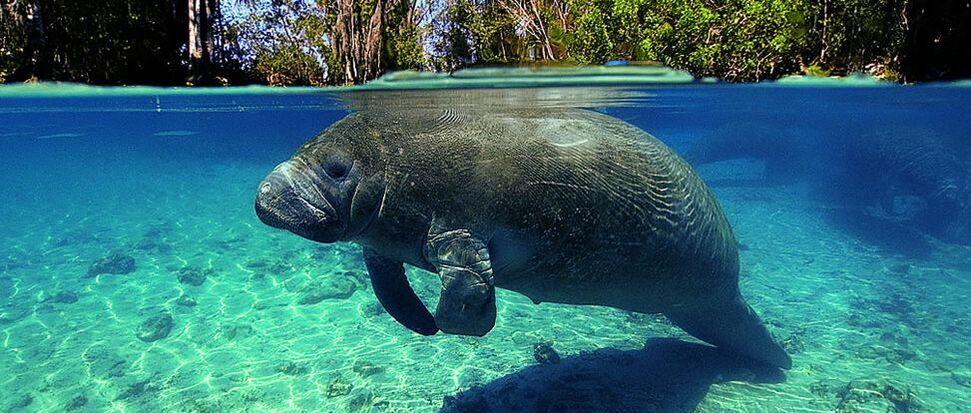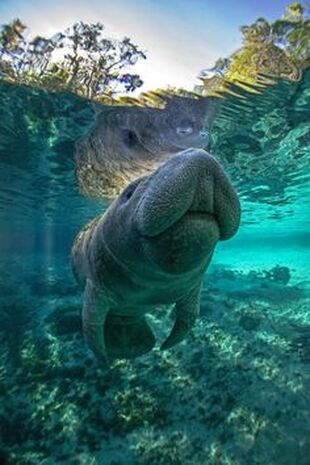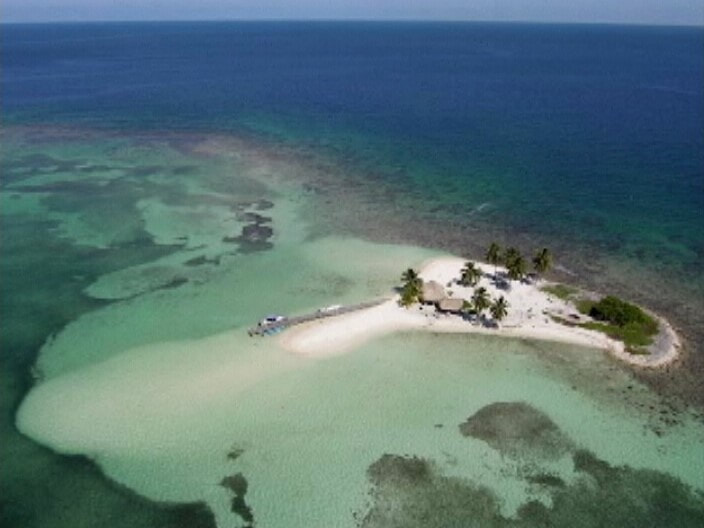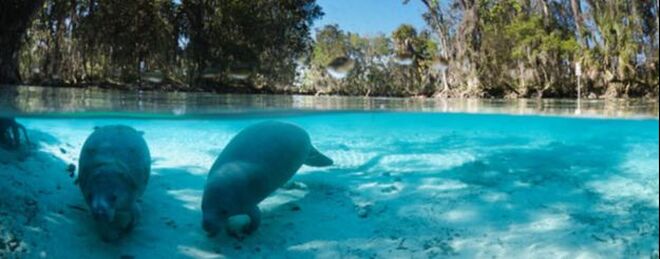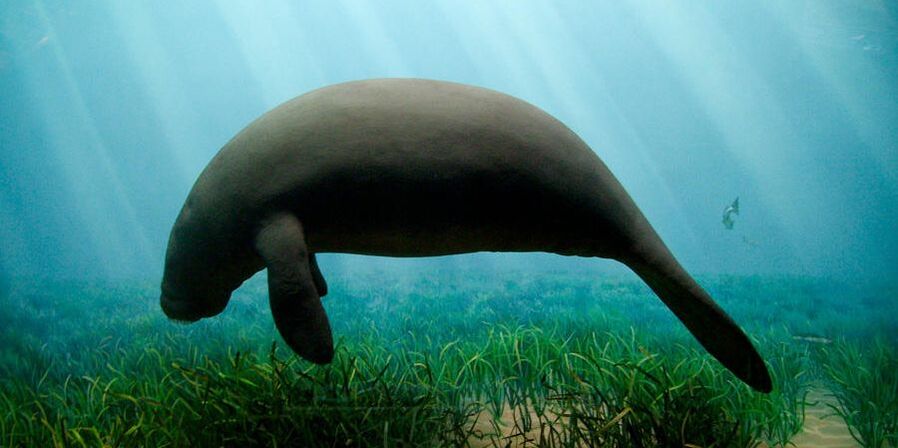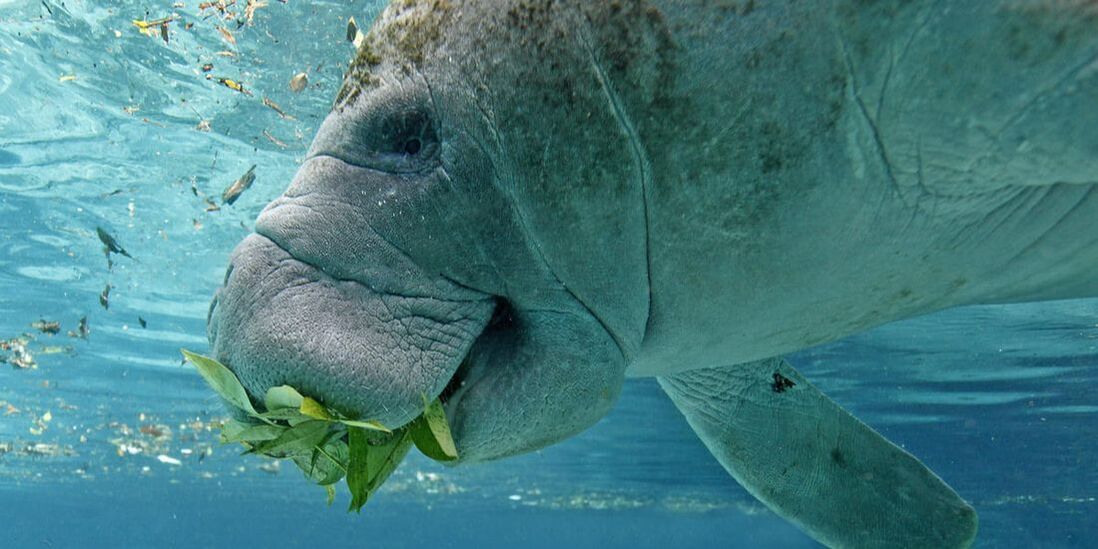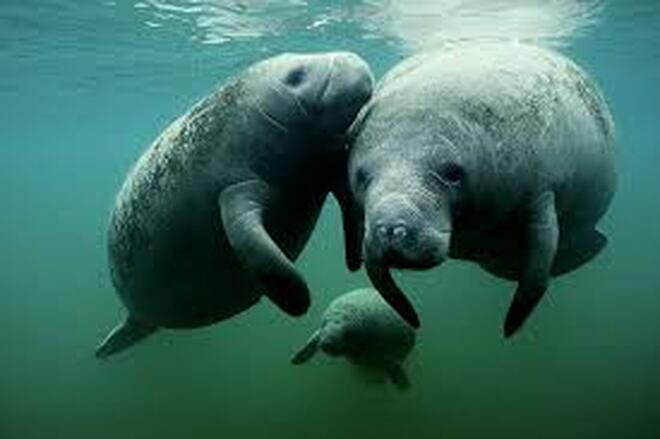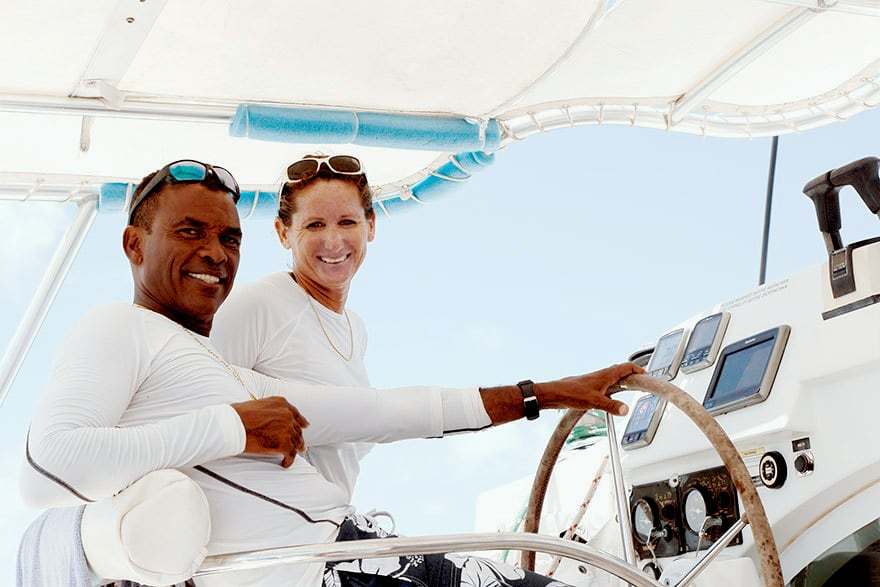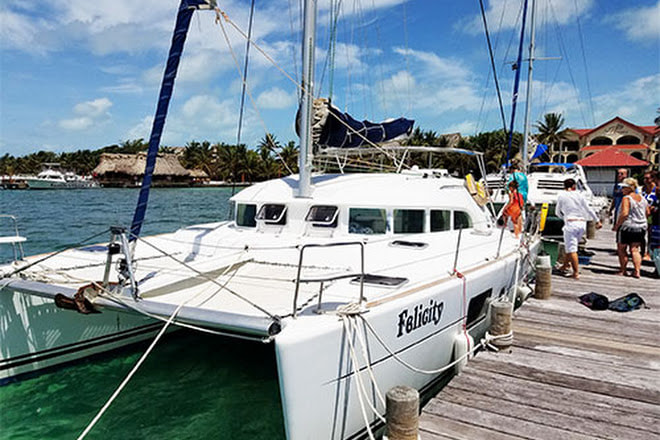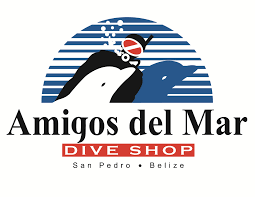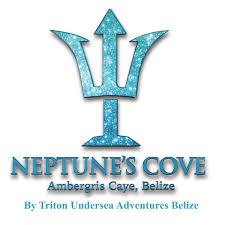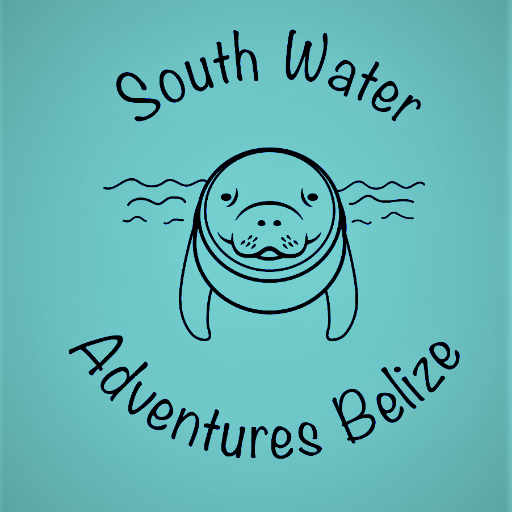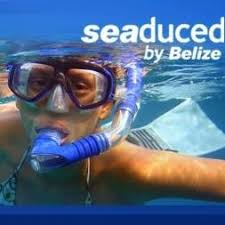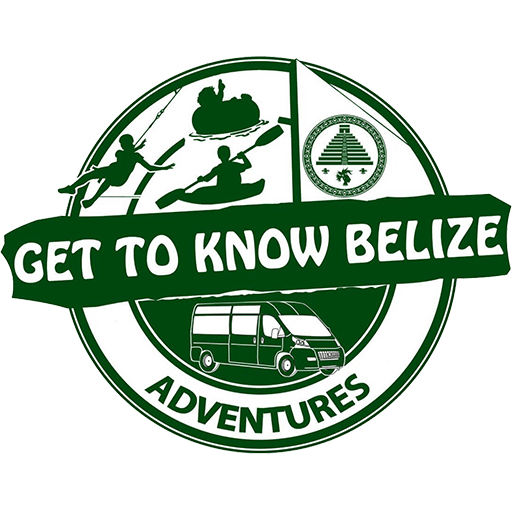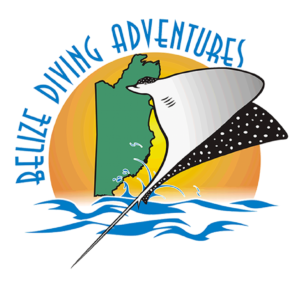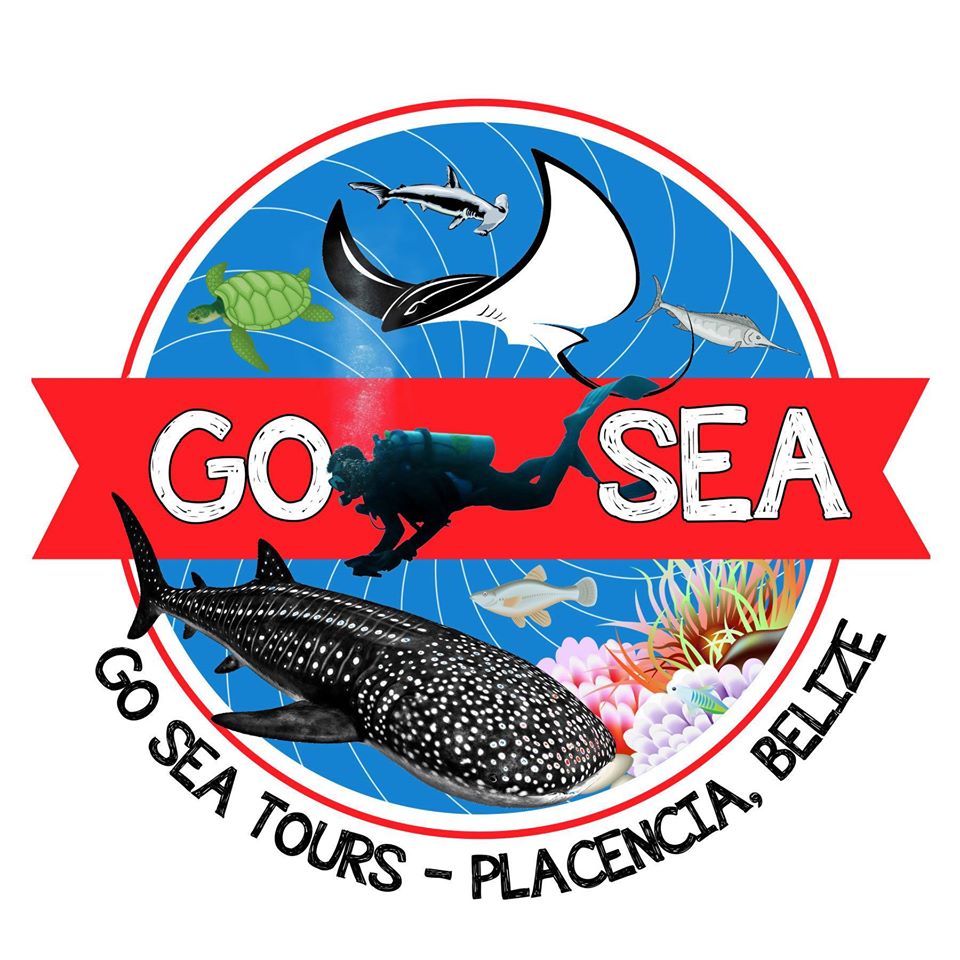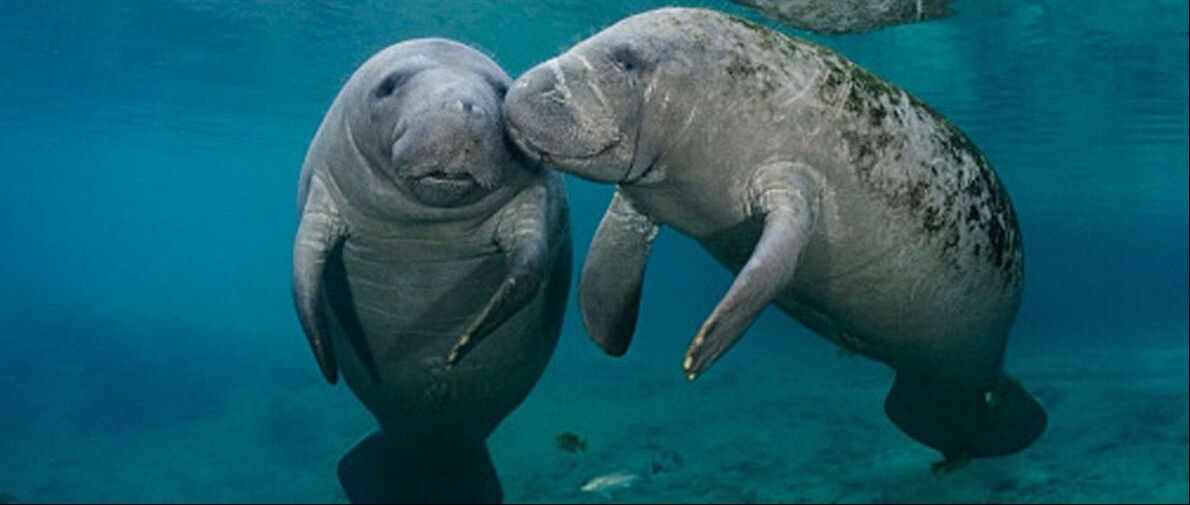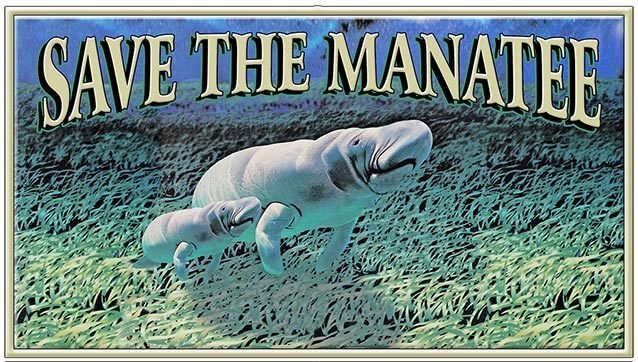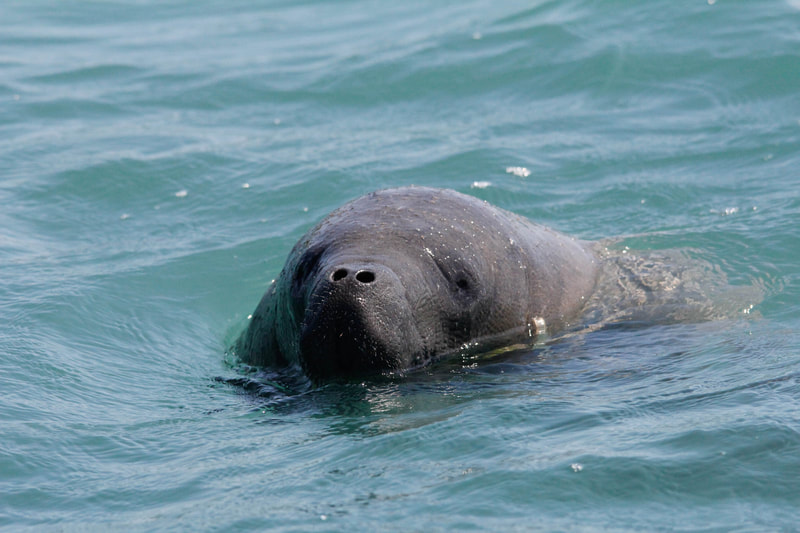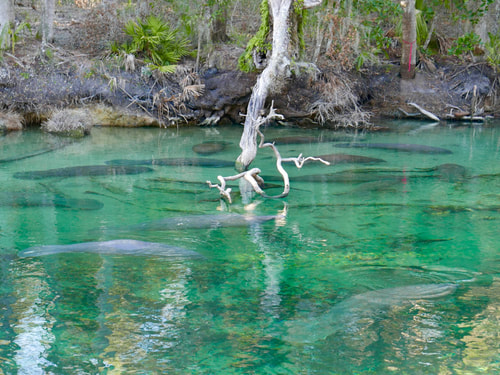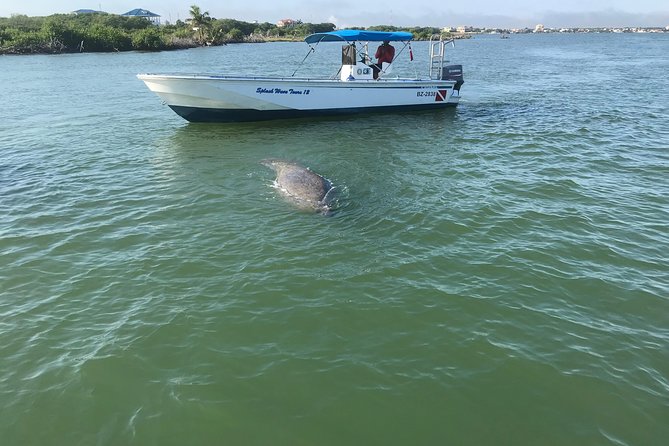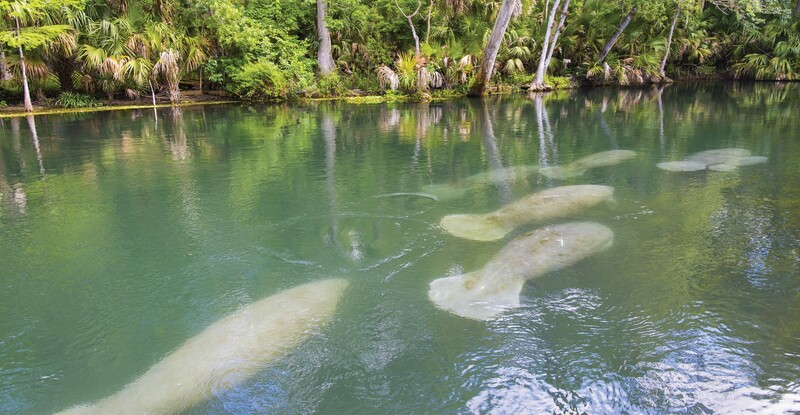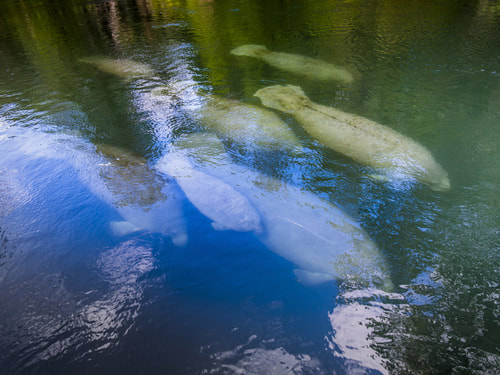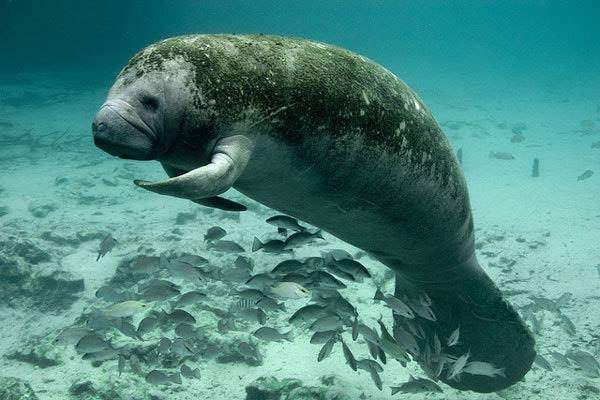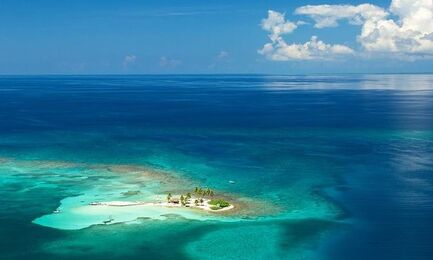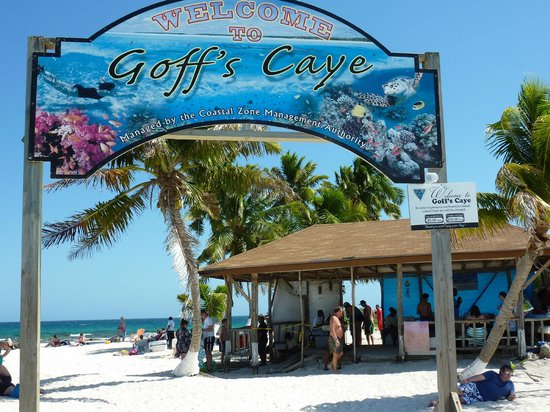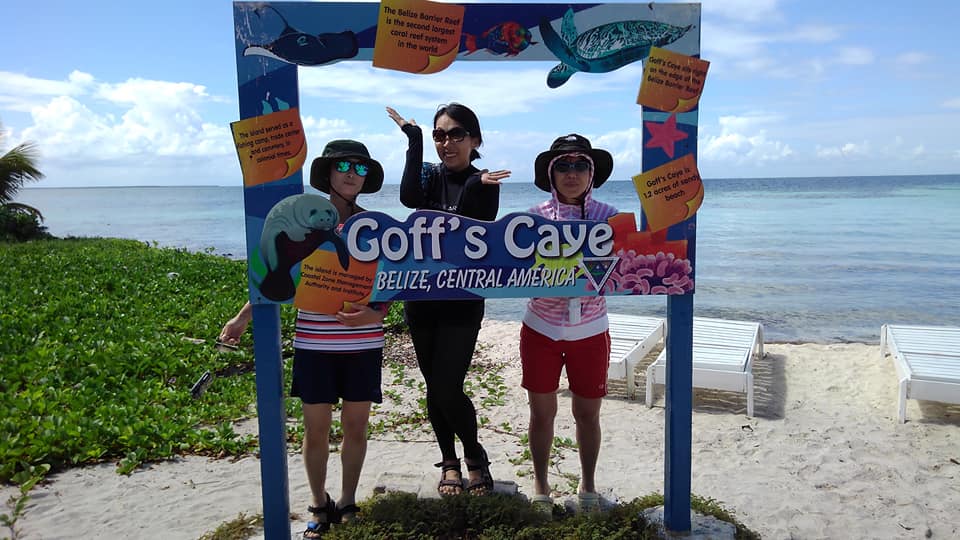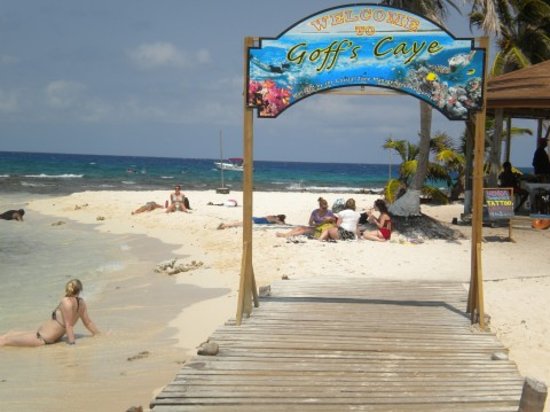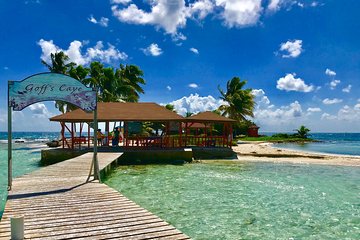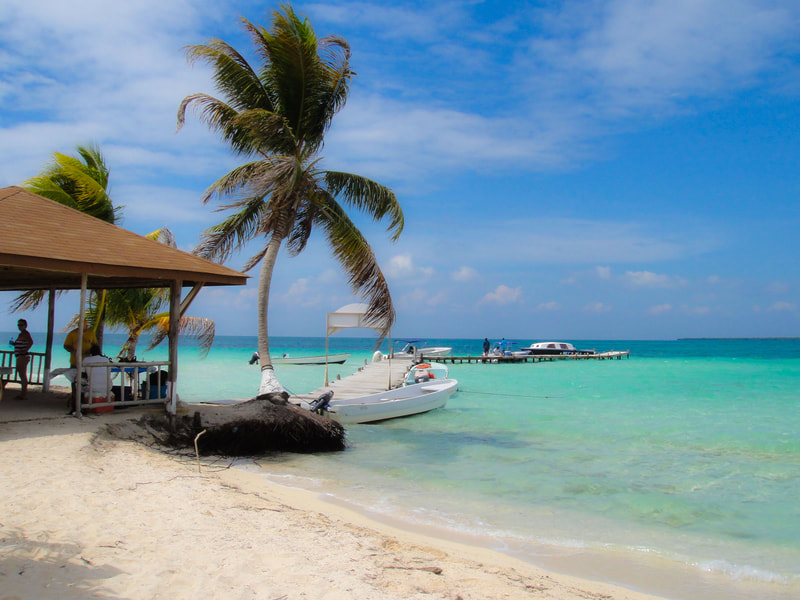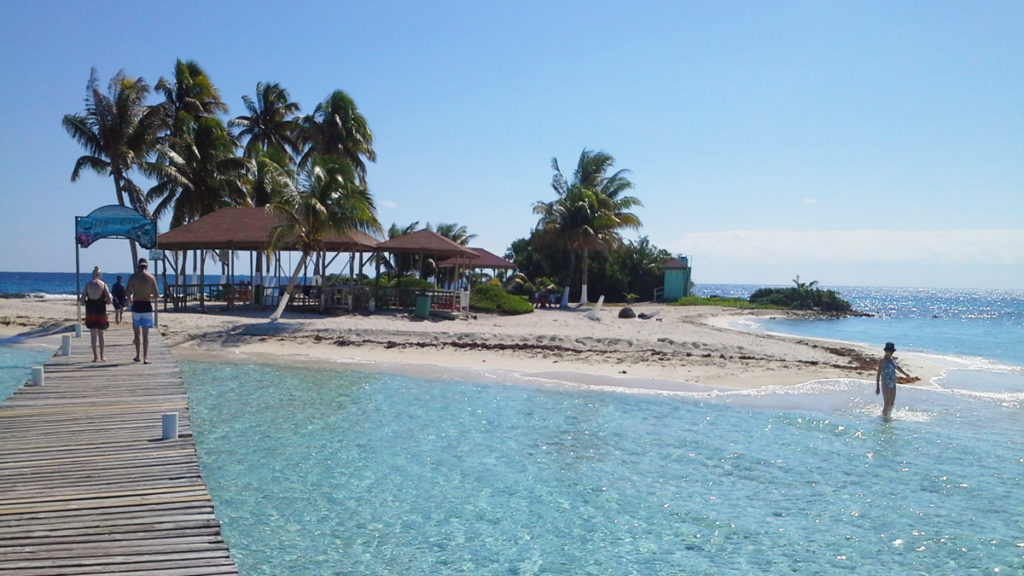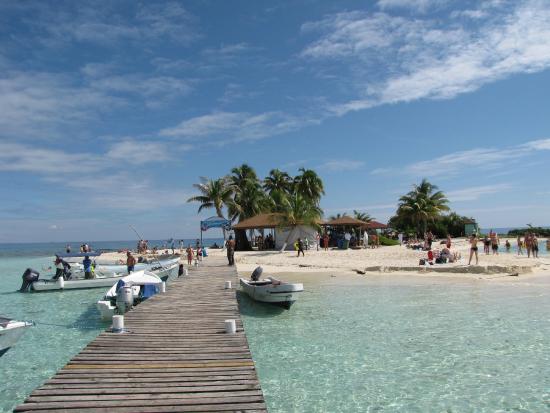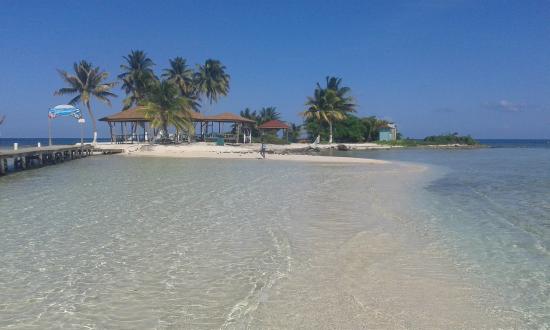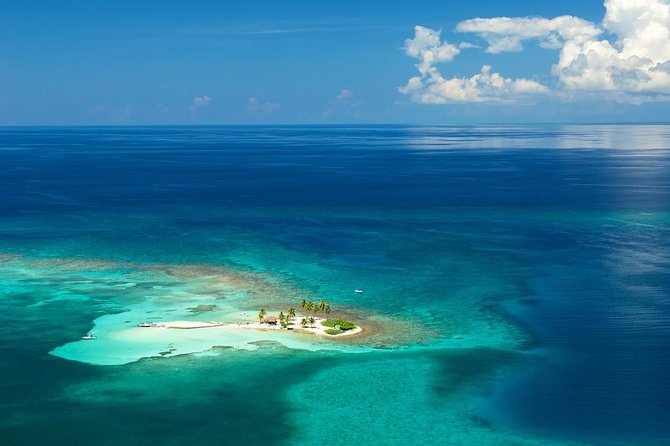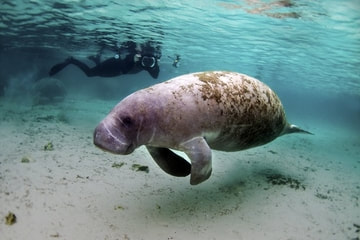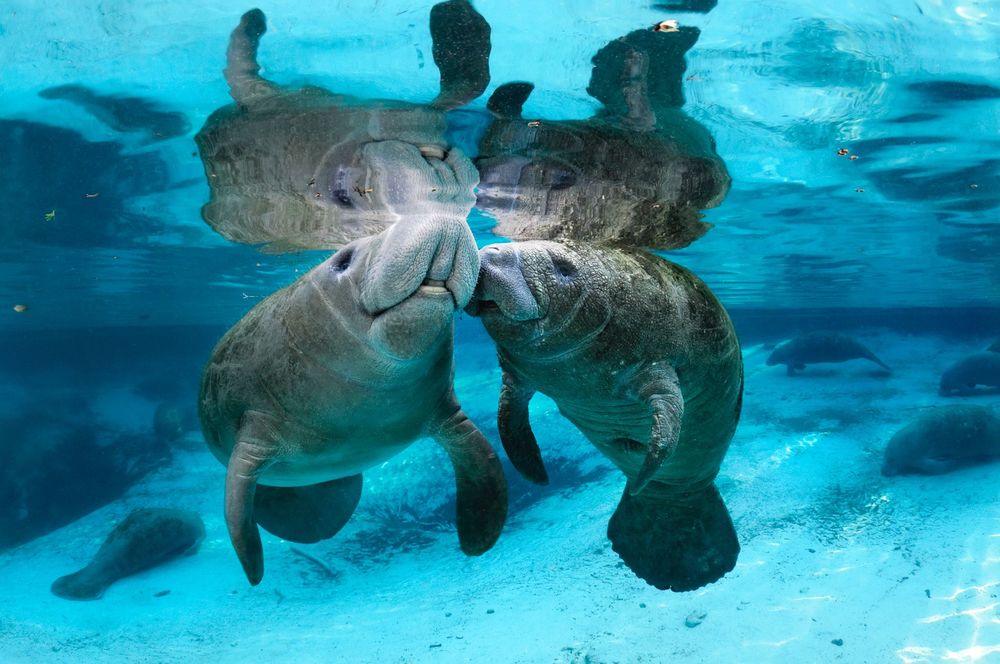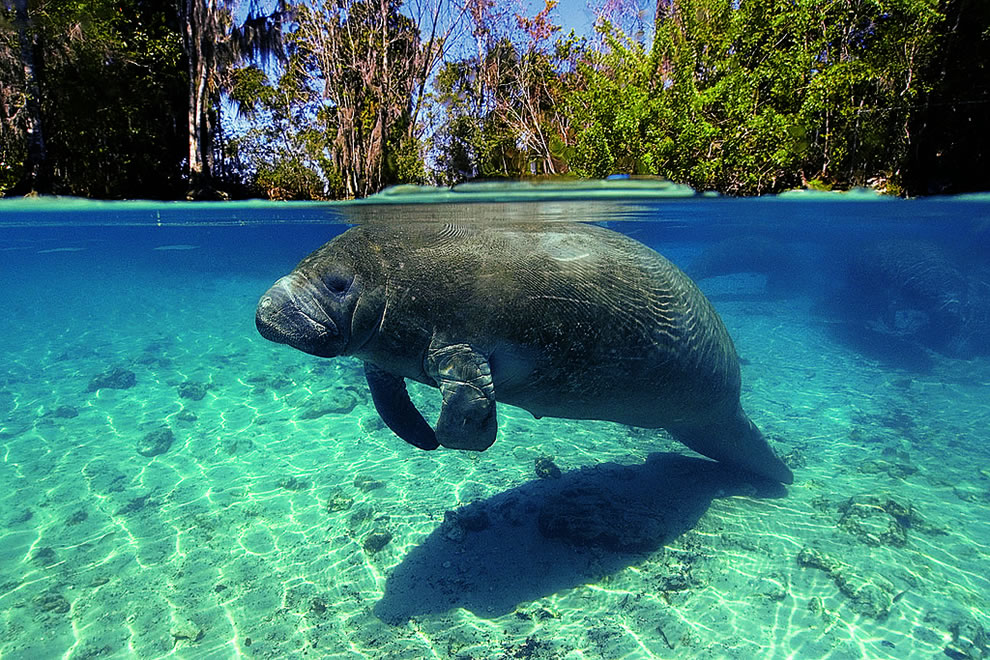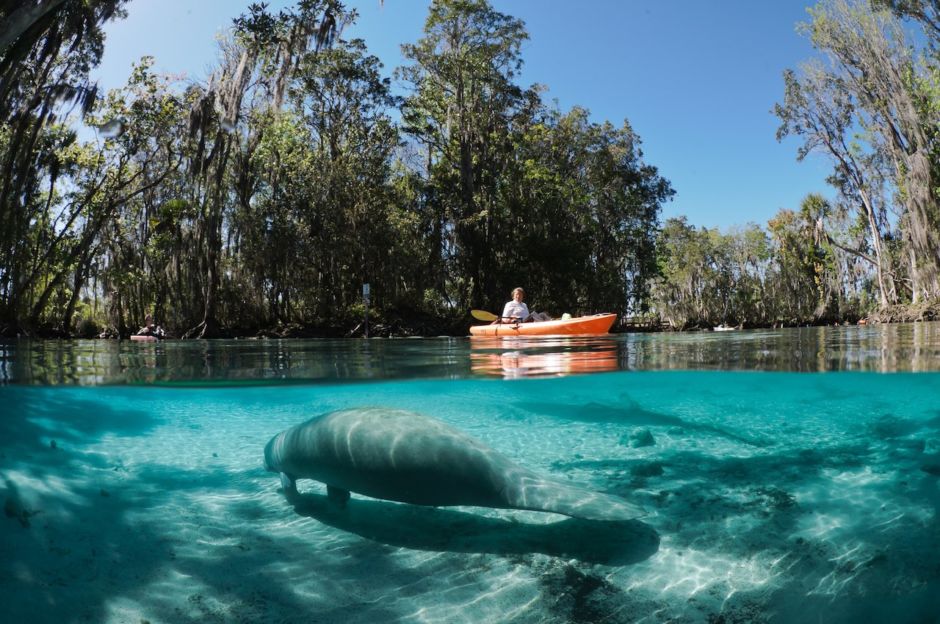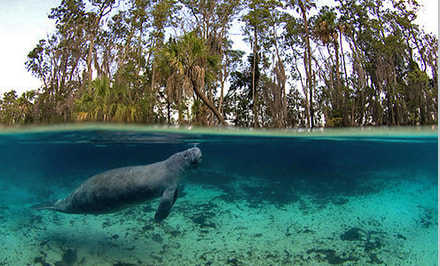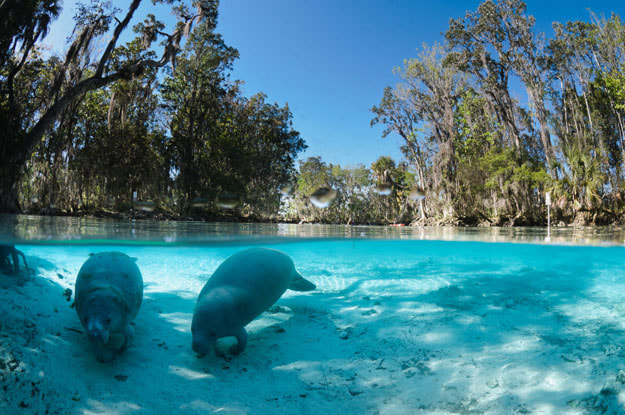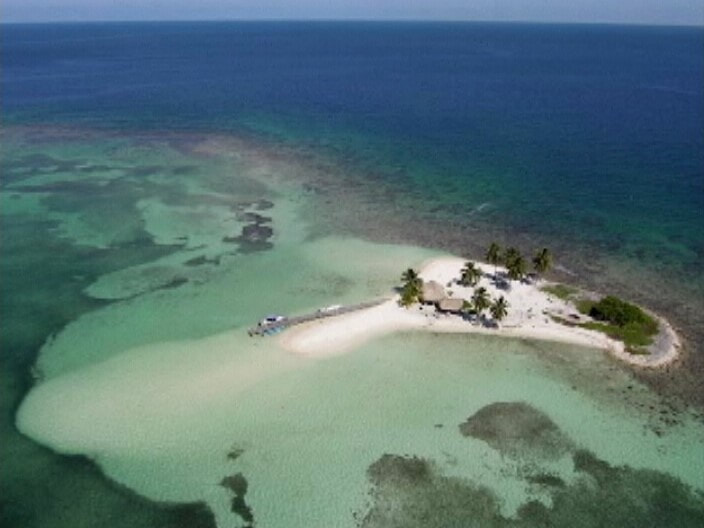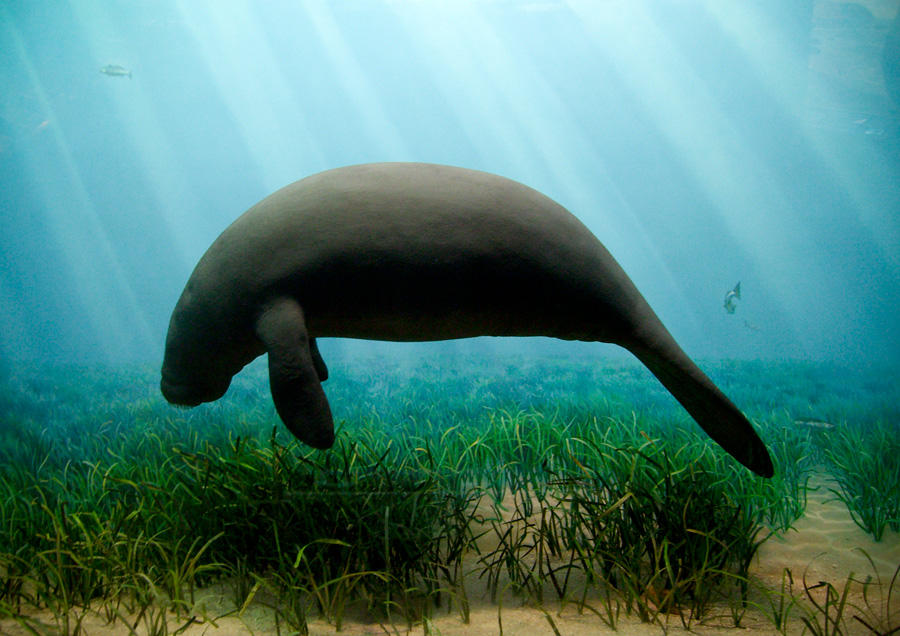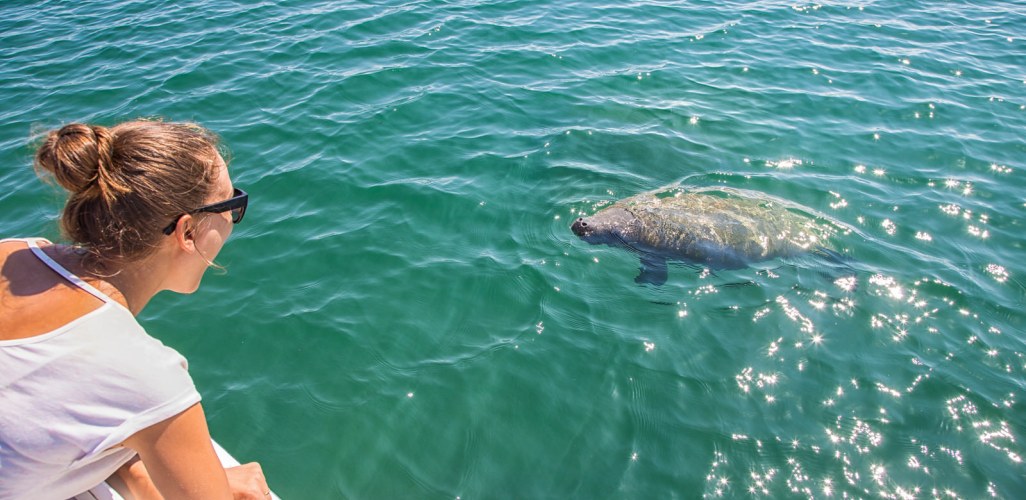MANATEE WATCH
Why Should I Go on a Manatee Tour on Our Belize Vacation?
This is a great family adventure, as it's low impact. You spend your day traveling by sea along the coast of Belize (via catamaran or boat), to observe the West Indian Manatee in their protected environment. Some tour operators will then take you to Goff Caye (a small island located nearby, with a great sandy beach). There you can snorkel and swim, while your tour guides prepare a fabulous beach barbecue for you. This activity is great for families with young children, who want the adventure of traveling on the sea, observing animals in their habitat, running along a beach and swimming in water waste deep.
This is a great family adventure, as it's low impact. You spend your day traveling by sea along the coast of Belize (via catamaran or boat), to observe the West Indian Manatee in their protected environment. Some tour operators will then take you to Goff Caye (a small island located nearby, with a great sandy beach). There you can snorkel and swim, while your tour guides prepare a fabulous beach barbecue for you. This activity is great for families with young children, who want the adventure of traveling on the sea, observing animals in their habitat, running along a beach and swimming in water waste deep.
|
Belize has the most manatees of any country in Central America. These playful and gentle creatures can be found in the waters just offshore from Belize City, locations like the popular tourism destination of Caye Caulker, and in many of the country’s marine reserves.
Manatees are herbivorous mammals that are commonly called sea cows. Belize is home to the West Indian manatee (trichechus manatus) that can grow up to 13 feet (4 meters) long and weigh up to 1,300 pounds (590 kilograms). Manatees enjoy lazy days in the warm waters of the rivers of Belize and the Caribbean, spending approximately half of the day resting in shallow waters with the other half slowly swimming in search of food. Currently there are approximately 1,000 manatees living in Belize, but thanks to strong protection from the government the manatee population is slowly growing. Where Can Travelers Spot Manatees in Belize? There are manatees found up and down the entire coast of Belize but there are currently (3) protected manatee areas, which give you the best opportunity to see these gentle giants.
West Indian Manatees
Manatees pronounced “MAN uh TEES”. The first Europeans to encounter manatees thought that they were seeing the mythically beautiful mermaids, which were believed to be half woman, half fish creatures. On closer inspection however, they were disappointed to see that these animals were not quite as beautiful as they thought. Manatees and Dugong are members of the order Sirenia. Sirenians include four living species: the West Indian manatee, the West African manatee, the Amazonian manatee, and the dugong. The West Indian manatee has two subspecies, the Florida and Antillean manatee. The West Indian lives in the warm coastal waters of the southern United States, Mexico, the Caribbean Islands, Central America (including Belize), and the northeastern countries of South America. The Amazonian manatee is only found in fresh water. It dwells in the Amazon and Orinoco river systems of South America. The West African manatee lives in the rivers and coastal waters of western Africa. In Belize, the Antillean manatee can be found in rivers, lagoons, estuaries, and coastal areas. Like most manatees, these creatures prefer shallow water that is two to six meters deep and are rarely found in deeper water. Because they have a very slow metabolism, they can only survive in warm waters. In the United States, the Florida subspecies migrates to warm water places when the water temperature dips below 20 degrees Celsius. However, in Central America, where the water temperature is warm all year, manatees don’t need to migrate in response to temperature.
Manatees range in color from gray to brown with wrinkled skin and single bristle-like hairs scattered all over their bodies. They have thick whiskers that cover their snouts and their upper lip is divided into halves, which close like pliers on the plants they eat. Despite their small eyes and lack of outer ears, manatees are thought to see and hear quite well. The nostrils are located on the topside of the snout and can be closed tightly by valves when the manatee is underwater. Their eyes have inner membranes that can cover the eyeballs for additional protection. Manatees have a paddle-shaped tail that is pumped up and down to move them along and propel their bodies through the water. They also have two flippers in the front of their bodies that they use for guiding their bodies and scooping up their food. Some manatees have three or four nails on the tip of each flipper. The average adult manatee weighs 1,500 to 1,800 pounds and measures ten to twelve feet in length. Adult females are generally larger than adult males. Manatee watching is a popular tourist attraction in Belize, and the gentle and sometimes curious creatures can be observed at Swallow Caye, Southern Lagoon and Corozal Bay. Belize may have the last stronghold for this marine mammal, and the Antillean manatee is listed as endangered under Belize’s Wildlife Protection Act of 1981. Belize Manatee (aka “Sea cow”) - It's a common term used for both manatees and dugongs, and the name likely comes from the fact that manatees are herbivores and spend most of the day grazing like cows that spend most of their day grazing on grass and hay. Manatees can consume more than 100 pounds (45 kilograms) of plants in a day and typically eat four to nine percent of their body weight in food. Manatees have been known to eat over sixty species of plants with the most common being sea grass. They have a flexible upper lip that they use to bring food into their mouth. They do this by grabbing and tearing the plant with their lips. The snout of West Indian manatee is bent further down than other species in this family and enables them to feed mainly on sea grasses growing on the sea floor.
Because sand is commonly mixed with the plants their teeth are easily ground down so their teeth are continuously being replaced. Manatees mostly eat in the water but they use high tides to reach feeding grounds and shoreline vegetation that are inaccessible at low tides.Amazingly, they are able to crawl part way onto a bank to reach shoreline vegetation. An average manatee spends six to eight hours a day feeding, two to twelve hours sleeping, and the rest of the time traveling. When resting, a manatee is able to suspend itself near the surface of the water but it can also lie on the bottom of the sea floor. A large resting manatee can stay submerged for about twenty minutes, but others need to resurface every three to four minutes. “Sea cow” is a common name for manatees and likely comes from the fact that they are herbivores who spend most of the day grazing on sea-grasses like cows that spend most of their day grazing in pastures. Manatee Playful Nature - When manatees are using a great deal of energy, they may surface to breathe as often as every 30 seconds. Well known for their gentle, slow-moving nature, manatees have also been known to body surf or barrel roll when playing. By using both their tail and flippers, manatees are capable of complex maneuvering including somersaults, rolls, and swimming upside-down. A manatee typically swims with up-and-down motions of its body and tail, like a whale or dolphin. Although manatees typically swim at a speed of two to six miles per hour, they have been known to be able to sprint at speeds of up to fifteen miles per hour.
Manatees & Communication - Manatees use various forms of communication in the water such as sound, sight, taste and touch. Manatees have an acute ability to hear and squeals are often used to keep contact between a mother and calf. It is thought that manatees are able to hear sounds that are even too low for humans to detect. However, vision seems to be the preferred method of navigation. Sometimes though, they are unable to see through some of the murky waters of their habitat. Individuals rub themselves against hard surfaces which may be a way that they clean themselves, but this behavior may also be a way that manatees leave their scent so other manatees can find them. |
Felicity Sailing
|
Manatee Reproduction & Mating - The reproductive rate for manatees is slow. Female manatees are not sexually mature until five years old, and males are mature around nine years of age. Typically, gestation periods for West Indian manatees range from twelve to fourteen (12-14) months. Calves are born weighing between 60 and 70 pounds and measuring about three to four (3-4) feet. The normal interval between births is two to five (2-5) years and mothers nurse their young for a long period. The calf may remain dependent on its mother for up to three years.
Historically - Manatees of Belize have been hunted for food, their hides, and their bones. This hunting continues in many South and Central American countries. In Guyana, a country in northeastern South America, people have used manatees to keep waterways free of weeds.
West Indian Manatees - West Indian manatees have no natural enemies, and it is believed they can live 60 years or more. Many manatee moralities are human-related and occur from collisions with watercraft. Most manatees have a pattern of scars on their backs or tails from collisions with boats. Scientists use these patterns to identify individuals, but these collisions can be fatal for the manatee. Besides boating accidents, manatees have been found crushed or drowned in flood-control gates and also suffer from pollution, ingestion of fish hooks, litter and monofilament line; entanglement in crab trap lines and vandalism.
Ultimately, however, loss of habitat is the most serious threat facing manatees today. West Indian manatees in the United States are protected under federal law by the Marine Mammal Protection Act of 1972, and the Endangered Species Act of 1973, which make it illegal to harass, hunt, capture, or kill any marine mammal. They are all listed as vulnerable to extinction on the IUCN’s (International Union for Conservation of Nature and Natural Resources) red list.
Steller's Sea Cow - The order once included a fifth modern species, the Steller’s sea cow. Unfortunately, the Steller’s sea cow is now extinct due to over hunting. Manatees living in the Belizean coastal waters are not as affected by human activity as they are in other locations such as Florida.
Antillean Manatee - The Antillean Manatee is listed as endangered under Belize’s Wildlife Protection Act of 1981.
West Indian Manatees - West Indian manatees have no natural enemies, and it is believed they can live 60 years or more. Many manatee moralities are human-related and occur from collisions with watercraft. Most manatees have a pattern of scars on their backs or tails from collisions with boats. Scientists use these patterns to identify individuals, but these collisions can be fatal for the manatee. Besides boating accidents, manatees have been found crushed or drowned in flood-control gates and also suffer from pollution, ingestion of fish hooks, litter and monofilament line; entanglement in crab trap lines and vandalism.
Ultimately, however, loss of habitat is the most serious threat facing manatees today. West Indian manatees in the United States are protected under federal law by the Marine Mammal Protection Act of 1972, and the Endangered Species Act of 1973, which make it illegal to harass, hunt, capture, or kill any marine mammal. They are all listed as vulnerable to extinction on the IUCN’s (International Union for Conservation of Nature and Natural Resources) red list.
Steller's Sea Cow - The order once included a fifth modern species, the Steller’s sea cow. Unfortunately, the Steller’s sea cow is now extinct due to over hunting. Manatees living in the Belizean coastal waters are not as affected by human activity as they are in other locations such as Florida.
Antillean Manatee - The Antillean Manatee is listed as endangered under Belize’s Wildlife Protection Act of 1981.
Save the Manatee
We are very fortunate to be able to observe endangered manatees around the Belize City/St George's Caye area. This is one of the five strongholds for manatees in Belize. Manatees are also observed near
In the Belize City area manatees regularly migrate from their foraging grounds, the undersea meadows of seagrass (turtle and manatee grass) that grows inside the barrier reef around the offshore cayes and patch reefs, to the Belize River to drink fresh water. Herein lies the greatest threats to manatees today. Their migration paths intersect the largest volume of boat traffic in Belize. The water taxis running between Belize City and Caye Caulker and San Pedro, and the tour boats carrying cruise passengers on a river tour to view the endangered manatee and other wildlife along the river including crocodiles, iguanas, birds and the occasional dolphin.
There are known areas where manatees rest - like the mouth of the Belize River. Yet no protected area preserving this area for manatees has yet to become established. Every Manatee Counts as there are reported to be less than 1,000 in Belize, and after years of around 30-50 being killed each year, the total number is likely less.
How can you help? If you are traveling on a boat by the Belize River Mouth ensure your captain/guide respects a NO WAKE zone in this area. If you are traveling up the river, ensure a crew member watch from the bow of the boat for manatees in the path of the boat. If your boat HITS a MANATEE, be sure to contact Coastal Zone Management and report the strike. If the manatee was only injured, perhaps it can be located and rehabilitated. If it was a fatal blow, the manatee will float up within a couple days and will join the statistics of those killed.
Every Manatees Counts - lets try to reduce the number of manatees killed by raising awareness to boat captains and visitors and locals driving their boats in one of the last strongholds for the endangered manatee in Belize.
We are very fortunate to be able to observe endangered manatees around the Belize City/St George's Caye area. This is one of the five strongholds for manatees in Belize. Manatees are also observed near
- Corozal Bay/New River
- Gales Point Manatee/Southern Lagoon
- Placencia/Monkey River and Punta Gorda.
In the Belize City area manatees regularly migrate from their foraging grounds, the undersea meadows of seagrass (turtle and manatee grass) that grows inside the barrier reef around the offshore cayes and patch reefs, to the Belize River to drink fresh water. Herein lies the greatest threats to manatees today. Their migration paths intersect the largest volume of boat traffic in Belize. The water taxis running between Belize City and Caye Caulker and San Pedro, and the tour boats carrying cruise passengers on a river tour to view the endangered manatee and other wildlife along the river including crocodiles, iguanas, birds and the occasional dolphin.
There are known areas where manatees rest - like the mouth of the Belize River. Yet no protected area preserving this area for manatees has yet to become established. Every Manatee Counts as there are reported to be less than 1,000 in Belize, and after years of around 30-50 being killed each year, the total number is likely less.
How can you help? If you are traveling on a boat by the Belize River Mouth ensure your captain/guide respects a NO WAKE zone in this area. If you are traveling up the river, ensure a crew member watch from the bow of the boat for manatees in the path of the boat. If your boat HITS a MANATEE, be sure to contact Coastal Zone Management and report the strike. If the manatee was only injured, perhaps it can be located and rehabilitated. If it was a fatal blow, the manatee will float up within a couple days and will join the statistics of those killed.
Every Manatees Counts - lets try to reduce the number of manatees killed by raising awareness to boat captains and visitors and locals driving their boats in one of the last strongholds for the endangered manatee in Belize.
MANATEE ADVENTURE
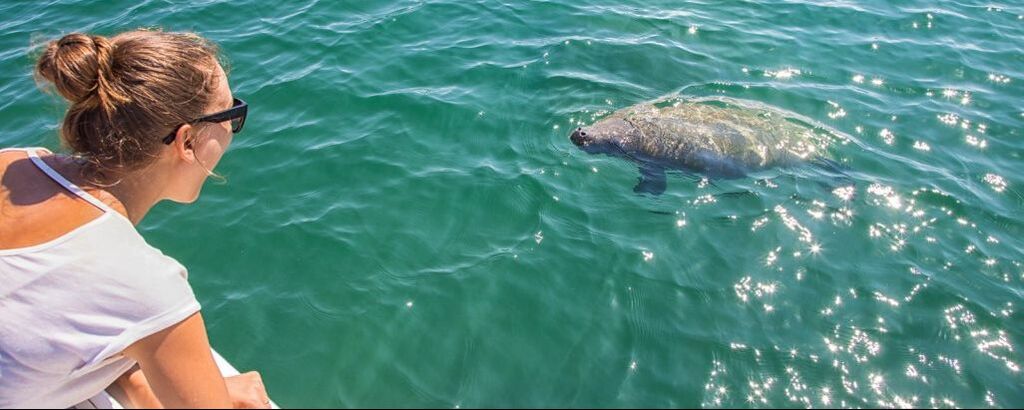
Manatee Adventure
Belize offers so many unique experiences that it is hard to say which one qualifies as the number one, “MUST DO” activity to partake in while visiting this jewel of the Caribbean. Be it the exotic Mayan ruins, the wild and vast jungles, or the exquisite scuba diving, this country has something to offer each and every one of us. For those visiting Belize who love to view wildlife in their native and natural habitat (above and below the water), and enjoy a sense of adventure and discovery, the manatee trip offers a certain excitement to enchant the most avid wildlife enthusiast. Not only does the day include spotting creatures you most likely have never seen in their wild habitat, but you will also get to snorkel along the great barrier reef of Belize and enjoy an incredible beach barbecue on a beautiful, postcard perfect desert island.
The day begins at 8:30 a.m. when you are picked up at the nearest pier to where you are staying. After all the guests have boarded, you will receive brief instructions pertaining to the day. You will then get to enjoy the next 60 minute boat ride to Swallow Caye, where you will get to look at the elusive West Indian Manatee. It is not uncommon to see dolphin as well as manatee, as both creatures share the same habitat. Once you've spotted a manatee, photographing it is another story is a whole new challenge. You might be lucky enough to get a snap shot of their nose as they surface for air.
As you approach the manatee destination, your first stop will be the Swallow Caye Ranger Station. This ranger station is like no other one you will ever see, as it is a modest one room building that stands on stilts in about six feet of water. Tethered to the building are two boats that the park rangers use for transportation, and the sides of the building are cheerfully painted with manatees. After the ranger collects a $5 US park fee from each person on the boat we proceed into the sanctuary. For those of us who cannot resist the magnetism of creatures large and small, manatees can trigger the same passion and excitement as seeing panda bears and wide-eyed baby seals. Perhaps it is their human like faces and behavior that attract us to these gentle mammals and takes a hold of our hearts. What ever it is, there is no denying the anticipation and excitement one feels when entering the Swallow Caye Wildlife Sanctuary.
Belize offers so many unique experiences that it is hard to say which one qualifies as the number one, “MUST DO” activity to partake in while visiting this jewel of the Caribbean. Be it the exotic Mayan ruins, the wild and vast jungles, or the exquisite scuba diving, this country has something to offer each and every one of us. For those visiting Belize who love to view wildlife in their native and natural habitat (above and below the water), and enjoy a sense of adventure and discovery, the manatee trip offers a certain excitement to enchant the most avid wildlife enthusiast. Not only does the day include spotting creatures you most likely have never seen in their wild habitat, but you will also get to snorkel along the great barrier reef of Belize and enjoy an incredible beach barbecue on a beautiful, postcard perfect desert island.
The day begins at 8:30 a.m. when you are picked up at the nearest pier to where you are staying. After all the guests have boarded, you will receive brief instructions pertaining to the day. You will then get to enjoy the next 60 minute boat ride to Swallow Caye, where you will get to look at the elusive West Indian Manatee. It is not uncommon to see dolphin as well as manatee, as both creatures share the same habitat. Once you've spotted a manatee, photographing it is another story is a whole new challenge. You might be lucky enough to get a snap shot of their nose as they surface for air.
As you approach the manatee destination, your first stop will be the Swallow Caye Ranger Station. This ranger station is like no other one you will ever see, as it is a modest one room building that stands on stilts in about six feet of water. Tethered to the building are two boats that the park rangers use for transportation, and the sides of the building are cheerfully painted with manatees. After the ranger collects a $5 US park fee from each person on the boat we proceed into the sanctuary. For those of us who cannot resist the magnetism of creatures large and small, manatees can trigger the same passion and excitement as seeing panda bears and wide-eyed baby seals. Perhaps it is their human like faces and behavior that attract us to these gentle mammals and takes a hold of our hearts. What ever it is, there is no denying the anticipation and excitement one feels when entering the Swallow Caye Wildlife Sanctuary.
